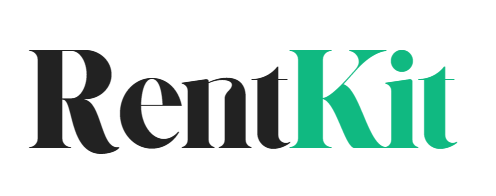How to Tell Where Your Money is Working the Hardest: A Guide for Real Estate Investors
As a real estate investor, one of your primary goals is to ensure that your money is working for you in the most efficient way possible. With a growing portfolio, it can become increasingly difficult to keep track of how each property is performing. You might be wondering: which of my rental properties are providing the best return on investment (ROI)? How do I measure which property is working the hardest for me?
In this article, we’ll explore how to determine where your money is working the hardest by measuring the performance of your properties, focusing on key metrics that can help you make more informed, data-driven decisions.
1. Understand the Key Metrics for Evaluating Property Performance
To start, let’s break down the key metrics that will allow you to compare the performance of your properties effectively. These metrics will give you a clearer picture of where your money is truly working the hardest.
Return on Investment (ROI)
ROI is perhaps the most straightforward metric for real estate investors. It measures the profitability of a property relative to its costs. To calculate ROI, use the formula:
ROI=(Net Income)/(Total Investment)×100
Net income refers to the income you generate from the property after all expenses (mortgage payments, property taxes, maintenance, etc.) have been deducted.
Cash Flow
Cash flow is the income you have left after all expenses are paid. Positive cash flow means your property is earning you money each month, while negative cash flow indicates that you're losing money. It’s essential to track cash flow to determine how well each property is performing on a month-to-month basis.
Cap Rate (Capitalization Rate)
The cap rate is another useful metric that shows the return on investment based on the property’s value. The formula for calculating cap rate is:
Cap Rate=(Net Operating Income) / (Property Value)×100
Cap rate helps you assess the potential return on an investment property, especially when comparing similar properties in different locations or with varying values.
Appreciation
While rental income is important, don’t forget to factor in property appreciation. Over time, the value of your properties may increase, and this capital gain can be a significant part of your overall return. Be sure to regularly check the current market trends in your area to see how much your properties are appreciating.
2. Analyze Your Properties' Performance
Now that you know the key metrics to track, it’s time to dig deeper and analyze how each property is performing. This is where you’ll need to spend some time comparing data across your portfolio to identify which properties are performing the best.
Track Your Financials Regularly
The key to making informed decisions is staying on top of your financials. Make sure you’re tracking income and expenses for each property on a regular basis. Tools like RentKit's Real Estate Investor's Ultimate Management Kit can help you automate much of this process, so you can easily access up-to-date financial data on your properties.
Compare Key Metrics Across Properties
Once you have your data organized, start comparing key metrics across all of your properties. Look at ROI, cash flow, cap rate, and appreciation. Don’t just focus on one metric; a well-rounded approach will give you a better overall understanding of which properties are performing the best.
For example, you may find that one property has a higher cap rate but a lower cash flow due to higher maintenance costs, while another property has steady, positive cash flow but a lower ROI overall. Weighing all these metrics together will give you a clearer view of which property is working the hardest for your investment.
3. Optimize Your Investments
Once you’ve identified which properties are performing the best, you can take steps to optimize your portfolio and maximize your returns. Here are a few strategies to consider:
Reinvest in High-Performing Properties
If you have properties that are consistently generating strong returns, consider reinvesting in them. Use the profits from high-performing properties to upgrade or expand, increasing their value or income potential even further.
Sell or Repurpose Low-Performing Properties
On the flip side, if you identify properties that are underperforming and show little potential for improvement, it may be time to sell or repurpose them. The proceeds from selling low-performing assets can be reinvested into properties with better ROI potential.
Refinance Properties with Strong Appreciation
If you have properties that have appreciated significantly in value, consider refinancing them to access some of that equity. You can use the funds to purchase new properties, pay down debt, or make improvements to your existing properties to increase their value.
4. Use Technology and Tools to Simplify the Process
Tracking the performance of multiple properties can be complex and time-consuming. To make this process easier, consider using digital tools designed specifically for real estate investors. RentKit’s tools, for example, provide templates and trackers that allow you to efficiently track rental income, expenses, rehab costs, and more—all in one place. By automating much of your financial tracking, you’ll save time and avoid costly mistakes.
Conclusion: Make Smarter Decisions with Data
Understanding where your money is working the hardest as a real estate investor is crucial for building a profitable portfolio. By regularly tracking key metrics such as ROI, cash flow, cap rate, and appreciation, and by comparing your properties’ performance, you’ll gain the insights you need to make smarter investment decisions.
Investing in high-performing properties and optimizing your portfolio for maximum returns will help you achieve long-term success in the competitive real estate market. And with tools like RentKit’s Real Estate Investor's Ultimate Management Kit, you can streamline the process and stay on top of your finances with ease.
Call-to-Action: Ready to track your property performance and boost your ROI? Get the Real Estate Investor’s Ultimate Management Kit now for only $20 and take control of your real estate investments!
